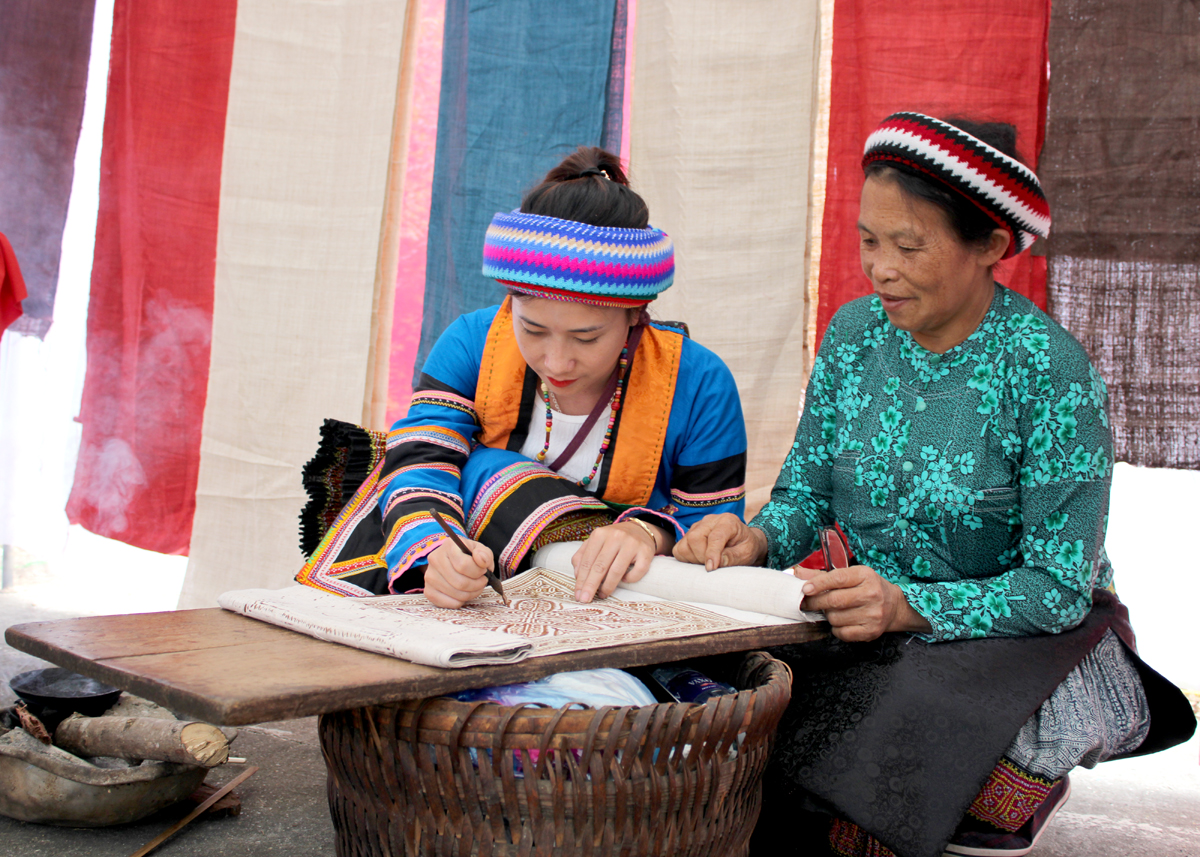Quan Ba preserves the art of creating beeswax patterns on fabric
BHG - Can Ty Commune and Lung Tam Commune in Quan Ba District are home to a large population of Mong ethnic people. For generations, local people have preserved their traditions from daily life in production.
Most local Mong women know how to spin linen, weave fabric, and embroider. The process of transmission as well as the creativity and secrets of each individual through generations have created unique and highly artistic patterns.
To complete a set of linen dresses, Mong ethnic women have to go through many elaborate and complicated production stages, requiring skills, perseverance, and time. The stage that determines the aesthetic value of the final product is creating beeswax patterns on fabric.
 |
| Teaching beeswax drawing on fabric to the younger generation. |
According to artisans, this technique came from the need to find a method of drawing eye-catching patterns that takes less time. Having tested many materials, it was only beeswax that has strong adhesion, sharp lines, and resistance to fading. Moreover, wax is also very easy to find. Since then, this painting technique has gradually been popularised among the Mong ethnic people.
The most distinctive feature of the beeswax painting technique is the use of fire. Before starting, the woman will prepare a small wax pan, a copper pen, linen, indigo water, and beeswax.
There are two types of beeswax: yellow and black, the latter of which has all the honey removed. The beeswax is melted and mixed well to match the light and dark colours. During the painting process, the wax is kept hot continuously.
The beauty of the pattern also depends on the copper pen. The Mong people often design unique pens with bamboo handles and 2 copper leaves with slots in the middle for drawing.
When drawing patterns such as triangles, spirals, coins, and crosses, the woman must sit by the fire, dip the pen into a bowl of hot beeswax placed on hot coals. As she draws, she wraps the cloth there.
The meticulous, elaborate and creative process takes weeks, months, or even several months to complete just a strip of fabric for a skirt.
After finishing drawing the entire costume, the fabric is boiled, dyed indigo and dried under the sun. Although it is time-consuming work, each Mong ethnic woman in Can Ty Commune and Lung Tam Commune is still dedicated to preserving this method.
Sung Mi De, Vice Chairman of Can Ty Commune People's Committee, said that the art of drawing beeswax patterns on linen is currently taught orally with on-site practice. To preserve this traditional practice, every year on holidays and Tet (Lunar New Year) festival, the commune hosts competitions on performing ethnic costumes, weaving and drawing beeswax on fabric. Visitors to the festivals have the opportunity to explore and experience the steps of making a Mong ethnic costume.
NGUYEN YEM





READER COMMENTS